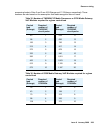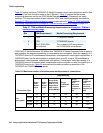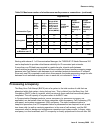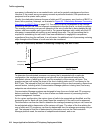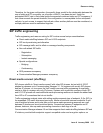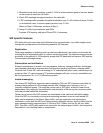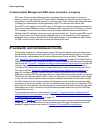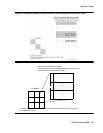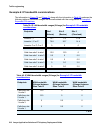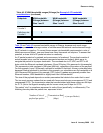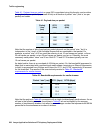
Resource sizing
Issue 6 January 2008 213
Therefore, for the given configuration, the specific linear model for the relationship between the
sum of static and CP occupancy, as a function of BHCC, has been derived. Using the
anticipated BHCC rate in that model yields the expected combined static and CP occupancy. If
that value exceeds the preset threshold, the configuration is unacceptable for the anticipated
call rate. In such a case, to support that call rate, either another platform must be considered, or
multiple platforms must be networked together.
SIP traffic engineering
Traffic engineering and resource sizing for SIP involve several unique considerations:
● Direct media shuffling between SIP and H.323 endpoints
● SIP trunk provisioning and allocation
● SIP message traffic and its effect on message handling components
● Non-call related SIP traffic:
- Registration
- Subscription
- Instant messaging
● Special configurations:
-Bridging
- Conferencing
● SES processor occupancy
● Communication Manager processor occupancy
Direct media connect (shuffling)
SIP phones shuffle to "direct media connect" with other SIP phones, but not with H.323 IP
phones for releases up to Communication Manager 3.1. On systems with mostly SIP phones
and few IP phones, or vice versa, the VoIP media resource traffic engineering is essentially
similar to that of a system with only IP phones. Systems with significant numbers of both SIP
and H.323 IP phones will need additional media processing resources to handle the added load
from SIP-to-IP connections that do not shuffle.
Traffic engineering analysis starts with adding another separate type of endpoint, S (for SIP), to
the expanded COI matrix discussed previously. Media connections between endpoints S and
circuit-switched phones and trunks take up the same media processing resources as a call
between IP phones and circuit-switched points. Connections between S endpoints and IP
phones, however, take up media processing channels on both legs of a call.
Communication Manager release 4.0 and later supports direct media shuffling between SIP and
IP stations, provided both endpoints support compatible codec and encryption options, as







